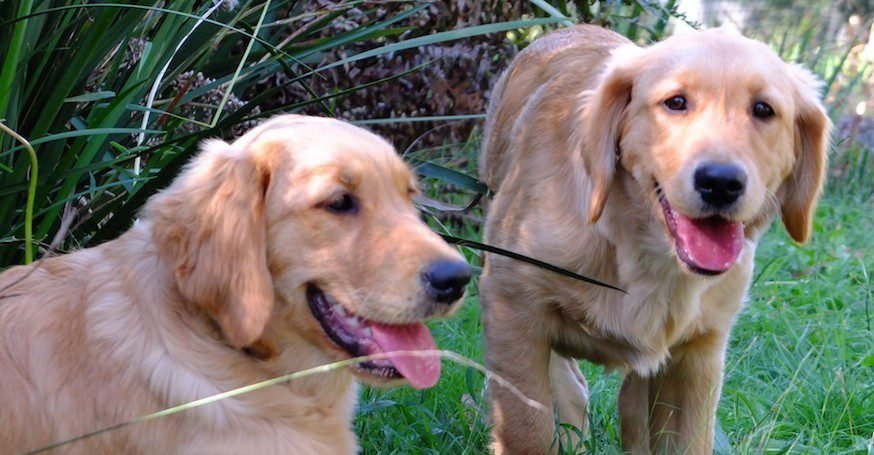Early treatment of Canine Hip Dysplasia may prevent the onset of arthritis as well as help to greatly reduce pain and lack of mobility.
A form of arthritis, canine hip dysplasia refers to the abnormal development or growth of the ball and socket joint of the hips in dogs.
In a healthy dog, the upper end of the thighbone (which is shaped like a ball) fits snugly into the socket of the hipbone, and the ball rotates freely, smoothly, and painlessly within the socket. The thighbone and the hipbone are shaped in such a way that they fix into each other perfectly to facilitate smooth movement. To strengthen the joint, the two bones are held together by a strong ligament. In There is also a very strong band of connective tissue which encircles the two bones to provide further stability.
All dogs, young and old, can develop hip dysplasia. However, large breed growing puppies are more prone to develop this joint problem. In extreme cases, young puppies (around 5 months of age) will start showing signs and symptoms during and after vigorous exercise. As time goes on and without medical treatment, these dogs may develop degeneration of the joint, arthritis, inflammation and pain. In serious cases, the dogs may not be able to walk at all.
The symptoms of canine hip dysplasia are similar to that of osteoarthritis:
- Limping or walking with an abnormal gait (The dog may run with a ‘bunny hopping’ gait).
- Reduced activities.
- Stiffness in the rear legs, especially after exercise or first thing in the morning.
- Difficulty rising or lying down or going up stairs.
- May resist movements that require full extension or flexion of the rear legs (Hip dysplasia causes pain on hip extension).
Causes of Canine Hip Dysplasia include – Heredity, especially in large breed dogs – Exercise, any activity that puts alot of force on the joints – Diet, feeding too much, or too little calcium – Obesity, extra weight puts more stress on the joints.
Conventional treatment for Canine Hip Dysplasia includes surgery (e.g. Triple Pelvic Osteotomy, Total Hip Replacement, Femoral Head Ostectomy), and/or pain-relief and anti-inflammatory medications, weight management, and oral supplements.
Natural Remedies for Canine Hip Dysplasia such as supplements and herbs which can be used to help repair joint tissue damage and to relieve pain and inflammation caused by canine hip dysplasia.
Supplements include – Glucosamine and Chondroitin are effective in repairing joint wear-and-tear due to deterioration; MSM (Methyl-sulfonyl-methane) is anti-inflammatory and is effective in relieving pain and inflammation in the joints; Fatty Acids (Omega 3’s) are found to be effective in reducing the inflammation associated with joint inflammation; Vitamins C and E have been found to reduce inflammation and cartilage damage.
It has been noted that dogs given colloidal silver and colloidal gold have shown a marked improvement in their condition as well as an overall improvement in health and vitality. Colloidal silver helps to regenerate both tissue and bone, colloidal gold is said to be very effective in treating arthritic conditions, by helping to eliminate pain, increase mobility and reduce swelling.
The following herbs have also been found to help in treating canine hip dysplasia – Dandelion and Nettle aid in joint repair and in eliminating metabolic wastes from the body; Alfalfa helps relieve pain and discomfort resulting from arthritis; Liquorice and Yucca have anti-inflammatory properties; Ginkgo, Hawthorn, Rosemary, Cayenne, and Ginger improve blood circulation.
Things you can do to help: Obesity can exasperate the condition, so keep the dog’s weight down. Regular daily exercise is important, but not all exercises are the same. For dogs with hip dysplasia, choose exercises that can:
- provide for good range of motion;
- build muscle;
- limit wear and tear on the joints.
- such as walking, swimming or slow jogging.
Dogs with arthritis and hip dysplasia should be kept warm and comfortable as the cold and damp will exasperate the pain. If necessary, put a coat on your dog when outside and get your dog a blanket at night. A bed with good support is also important for a dog suffering from hip or joint pain.

